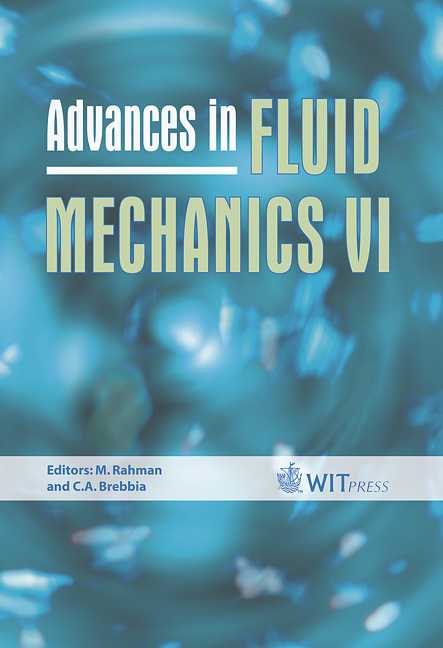Experimental Investigation Of Grid-generated Turbulence Using Ultrasonic Travel-time Technique
Price
Free (open access)
Transaction
Volume
52
Pages
10
Published
2006
Size
364 kb
Paper DOI
10.2495/AFM060151
Copyright
WIT Press
Author(s)
W. Durgin & T. Andreeva
Abstract
This paper presents a summary of experimental work conducted by the authors in the area of acoustical wave propagation through turbulent media. The ultrasonic time-of-flight method, using dual transducers, is utilized to determine some characteristics of grid-generated turbulent flow produced in a low turbulence, low speed open circuit type wind tunnel. The experimental work utilizes the high speed Data Acquisition (DAQ) card, Labview Software connecting the experimental apparatus and computer, Low Speed Wind Channel with ultrasonic transducers placed in it and customary built grids, with heating elements inside. Keywords: ultrasonic travel time technique, caustics. 1 Introduction There has been an intensive research work focusing on ultrasonic flow meters and their capabilities for measuring non-ideal flows [3]. Evidence of ultrasonic technology’s value to industry as effective flow diagnostic solutions can be taken from the fact that the Ultrasonic Flow Metering market size quoted in 2002 at nearly $406 Million dollars, is projected to expand to a $600 Million dollar industry by 2007. New applications for ultrasonic technology continue to emerge but its potential will depend on the innovations that take place in the future. The classical theory of acoustic wave propagation through turbulence predicts linear increase of the first-order travel-time variance with the propagation distance. However, recent numerical and theoretical studies exhibit an almost quadratic growth of travel time variance with travel distance [4],[5],[6]. This
Keywords
ultrasonic travel time technique, caustics.





